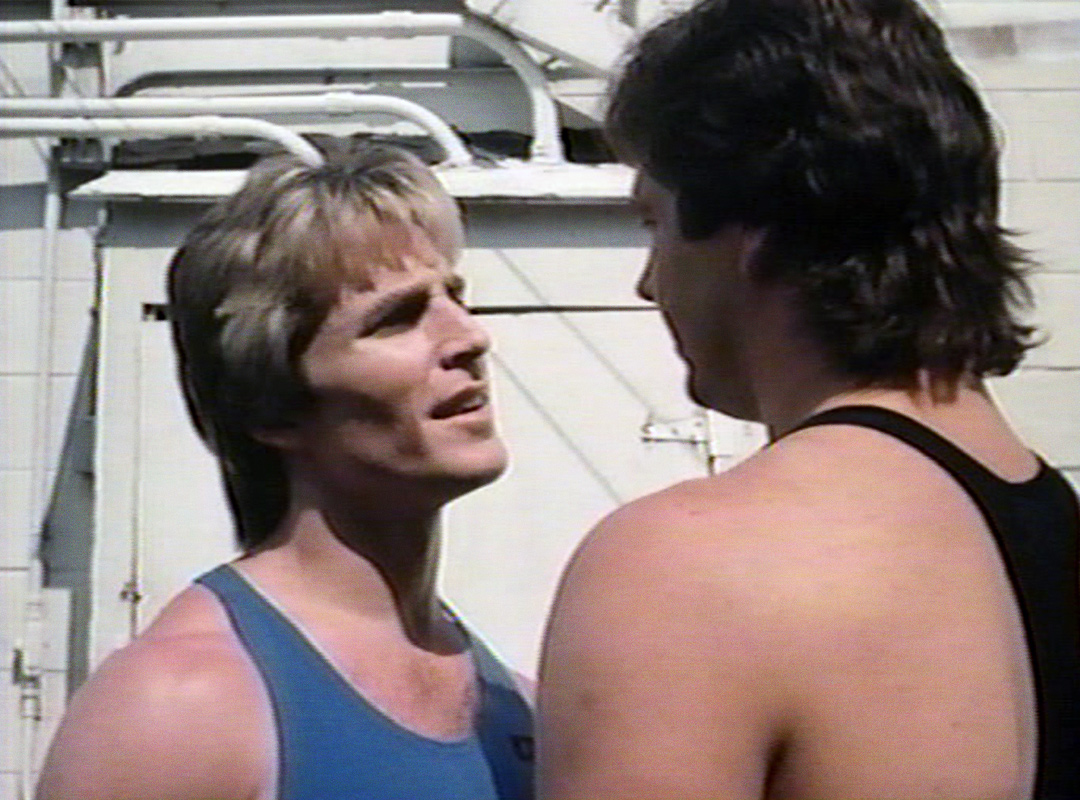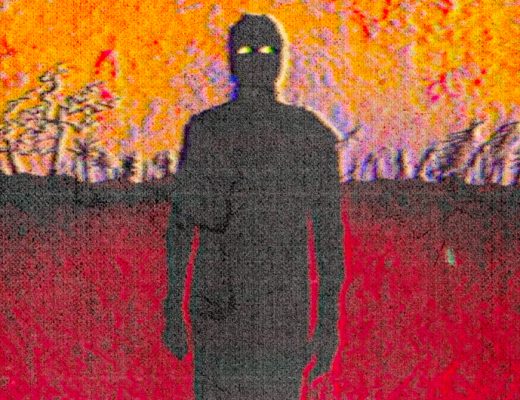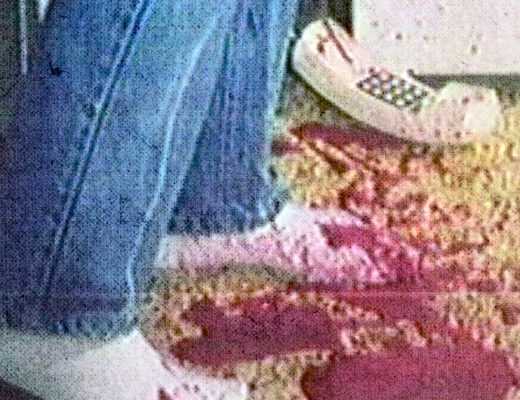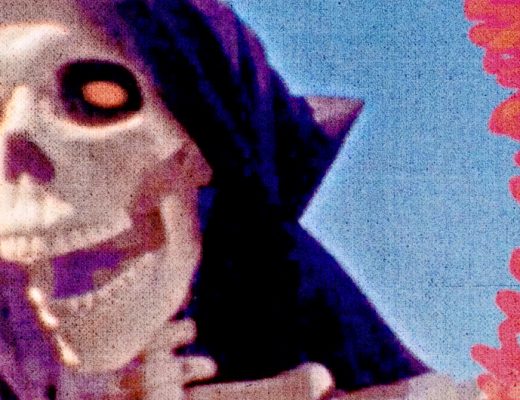Note: This interview was originally conducted in 2015, and is one of the last known interviews with the late David Prior.
The Prior brothers didn’t make movies. They made revolutions.
Since 1983, the Priors — Ted, and the late David — double-handedly influenced the direction of home video entertainment. With Sledgehammer, they created the first shot-on-video (SOV) horror movie that was produced exclusively for home video distribution. With Deadly Prey, they proved that Ted Prior was capable of ripping a man’s arm off with his bare hands. Then, using that arm to beat the same man to death. The brothers even co-founded the legendary A.I.P. Home Video, their own independent production and distribution label. But by far, the Priors’ most triumphant contribution to mankind is Killer Workout.
Spandex. Sweat. Open mouths. Headbands. Leg warmers. Formidable synth-pop (“Animal Workout”; “Woman On Fire”). And lots of sexually suggestive aerobics while a maniac with a giant safety pin terrorizes a spa. That’s Killer Workout. Shot in Hollywood over a few weeks in 1985, Killer Workout was the first-ever “fitness slasher.” The movie kicked off an entire sub-genre of workout-related horror movies, which included Death Spa, Dance Or Die, and Slashdance. Ultra-cheap, immersed in bizarro situations, and straining to make sense of events that require no explanation,Killer Workout is a benchmark in 1980s trash-horror absurdity.
We hit the gym with filmmaker David Prior and actor Ted Prior to find out how it all happened.
BS: From Pulsebeat to Heavenly Bodies, the early 1980s home video landscape was filled with low budget movies that centered around getting fit. You raised the bar and created the first “fitness slasher.” Where did the idea come from?
David Prior: This was the brainchild of David Winters, who called me, told me the idea and asked me if I could make the movie on a somewhat low budget. I said, “Yes, of course.” And in six days I went back to see David and handed him a finished script. Six days at a typewriter. This was unheard of. And that was the script we shot.
Ted Prior: I really had nothing to do with the concept or movie for that matter. I was too busy partying and being a maniac! Although, I think I came up with the idea for the giant safety pin. It was on a keychain that I saw.
BS: Each of your first four movies have a distinct mood, from the synth-drone slashering of Sledgehammer to the war-scarred brutality of Killzone. Killer Workout is a total party, filled with aerobicizing, killings-via-giant-safety pin, and Ted punching people. Was this the movie that you set out to make? Or did the absurdist elements develop while you were filming?
TP: I remember ALWAYS taking it seriously. We never meant to be over-the-top. I go to screenings today and hear the insane laughing at what we were doing. Of course I see the humor now, but at the time, I was going for an Academy Award. LMAO!!!
DP: It was all pretty much just shooting what was in the script. And if you are making a movie that is going to use clichés, then why not go as far as you can with it?
BS: How long was the shoot on Killer Workout? Was the budget comparable to your previous movies?
DP: Comparable budget. Three week shoot. Primarily at night, which is how we got the health club. We had to get in when they closed and be gone when they opened.
BS: There’s a lot of working out in Killer Workout. Some of it might be categorized as “suggestive.” Was this part of the script or did it happen spontaneously?
DP: Of course it was meant to be suggestive! Anyone who doesn’t think so must be dead below the waist. Everything that was shot was part of the script, but there was some improvisation with the workout numbers. The real key to how they appear throughout the movie was David Winters’s idea. That happened while we were editing the movie.
TP: I believe all the T&A was absolutely part of the deal. It’s kind of hard to put a camera a foot from a girl’s ass while she’s doing squats and say that it’s not on purpose!
BS: This one’s for Ted. Early in Killer Workout, we learn that no one should pick a fight with Ted Prior on his first day of work. Unlike most low budget productions, the fight scenes in your movies are always realistic and intense. What was your background in stunts and fighting before making movies? Did you choreograph the fight scenes?
TP: I had no experience in theatrical fighting, but I was a dancer and pretty athletic. And if you think about it, it really is a dance of sorts. Fritz and I just sort of made up the fight as we went, one shot at a time. Later on, as I got more experienced with on-camera fighting, I choreographed all my own fights, as well as any other fighting in the film. Remember most — if not all — the actors had not only never been in a movie, but certainly never fought on-camera.
DP: I have always wanted fight scenes to look realistic. They almost never do, even in big studio movies. Just watch the editing on almost any movie and you will see that you do not get to see the punch, where it hits, and at times, even who threw it. It is just a bunch of cutting, blinding speed shots, and sound effects. Then we see the end results. I have been criticized for not doing it the way the big boys do, but I don’t care. I want to SEE the fight. I choreograph most of my stuff. No background in fighting. Long background in what looks good on camera.
BS: The obscure synth-pop songs on the soundtrack are incredible. Donna De Lory’s “Only You Tonight” feels like the best song that Pat Benatar and Bananarama never collaborated on. How did you find the songs?
DP: We found the music by going to ASCAP and BMI, the music unions, and getting a bunch of their members to submit songs that they had already recorded. We got hundreds of them. Honestly, I was surprised at how good some of them were.
BS: Sledgehammer was distributed with World Video and Killzone landed with Vestron. How did the distribution deal with Academy for Killer Workout come about? Did it perform well on home video?
DP: That deal came through Shapiro Entertainment and Vestron did very well. We even got overages, which was a very rare thing.
BS: Death Spa, Dance Or Die, and Slashdance followed Killer Workout in the “fitness slasher” movement. Killer Workout even features a scene where someone spray paints “DEATH SPA” on the side of Rhonda’s spa. Were you aware that you created this sub-genre? Did you see any of the other movies?
TP: I’ve been invited to a lot of events to speak about our movies and it always blows my mind. I don’t think my brother or I had any idea all this was going on around us. But I have to say, it’s cool as shit! My son has been to a bunch of screenings and stars as my son in Deadliest Prey. I can’t even begin to explain what that means to me!
DP: I was aware of these, but never saw them. And it was not surprising that Killer Workout was copied. It made money, so others jumped on the bandwagon.
BS: After Killer Workout, you struck a distribution deal with Sony (Deadly Prey, Mankillers, Night Wars) before launching the legendary A.I.P. home video. What did you learn from Killer Workout in terms of distributing your own movies?
TP: That’s a question for Dave. I was too busy drinking and chasing girls.
DP: Nothing at all. You are talking apples and oranges here. Our own distribution, as far as foreign was concerned, started from the very beginning of A.I.P. The U.S. Video business was a very different business in those days and required hundreds of thousands of dollars, several full time employees, and a lot more for each release. We got into this business a few years after Starting A.I.P. Productions and A.I.P. Distribution. People use the word “distribution” as sort of a blanket word, but in most cases, it means something entirely different.
BS: What comes to mind when you think about Killer Workout today?
TP: Besides the obvious — hanging out with a bunch of girls day after day — I would have to say the fight scene with Fritz when he kicks me into the coldest pool on the planet at 4am. That same fight scene, I punch Fritz with a right-cross and he jerked back, splitting his head open on an intercom speaker that was mounted on the wall. Fritz being Fritz, he broke out a needle and put about ten stitches in his head to stop the bleeding long enough to finish the scene.
DP: Even though it was difficult to shoot and the hours were insane, I look back at it like it was really a magical time in my life. In fact, I was changing my life forever while I was doing this. During the sound mix of this movie is when David, Peter, and myself decide to start our own company. Then called Action Films . . . . and now those days are long gone.







